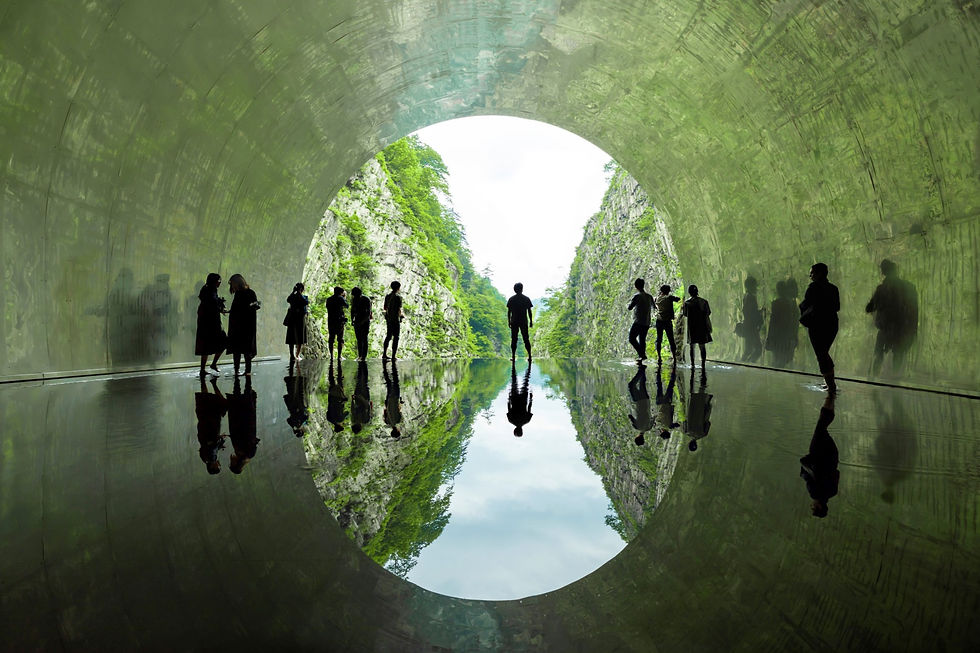Wicked problems are defined by their innate complexity. They derive from their inherently system-based origins. As such, they have no single readily grasped solution, nor ever a perfect one.
A wicked problem usually involves multiple stakeholder groups, each holding different parts of a possible solution, often completely unaware of the perspectives and potential contributions of other stakeholder groups.
It stands to reason, therefore, that collaboration and negotiation by the widest range of stakeholder groups will create a synthesis of elements and produce nuanced ideas and approaches to the problem-solving process.

"The Drive'' by East Gippsland artist Dore Stockhausen 2016 (an ongoing area of exploration time, place and the peripheral view.)
Co-design is unique as a process. It solicits creative contributions from all the stakeholders involved, and critically, it allows for the iterative outlining and prototyping of emerging ideas. It enables stakeholders to experience the implications, advantages and risks of the different propositions. Sharing of knowledge and discussion can unpack ideas and allow for stakeholders to make more refined risk assessments.
It is in this complex intersection, that combines cooperative experimenting and testing of ideas to build a greater knowledge base around the problem and the collaborative ability to establish clearer understanding of risk, that makes the design process singularly valuable.
Through ‘co-design’ a crafted and uniquely configured response can be developed that enables all stakeholders to share in and understand both the benefits and the real risks.

"Walking Pace" by Dore Stockhausen 2019 encouraging the viewer to look more observantly at the world around them to see the beauty in the natural and the fabricated environments
The Sanctuary East Gippsland collective have extensive local knowledge networks and a high-level capacity to engage a wide cross-section of stakeholders in a collaborative co-design program. We are uniquely positioned to address the wicked problems that present in the long-term securing of spectacular biodiversity while simultaneously exploring the opportunities and risks associated with ‘world-class’ eco-cultural-tourism development.

"The Next Page" by Dore Stockhausen 2020 The Edge of My Vision Series post-fires prompting the artist to look inwards into the source of her relentless creativity..
Through a cost-effective program of co-design workshops we can engage the wider community in co-developing solutions, combining and sharing their knowledge and experience and collaborating in the design, testing and prototyping of a broad range of possible strategies.

Photo: MAD Architects
Our creative inter-disciplinary process allows the community (key stakeholders) to engage collectively in realistic and purposeful exploration of the problem area. Conducting the workshops on site, in nature, can also connect the community in a healthy way to the biodiverse but threatened bounty of the region.

Author: Michael Trudgeon, Professor of Architecture & Design in Social Context RMIT University; Director, Crowd Productions P/L; Deputy Director, Eco Innovation Lab, University of Melbourne.
Paintings by artist Dore Stockhausen, who contributes both intellectual and emotional perspectives in her responses to the natural environment of East Gippsland.
Photo: by MAD architects, global leaders in the design of eco-tourism destinations.
Comments